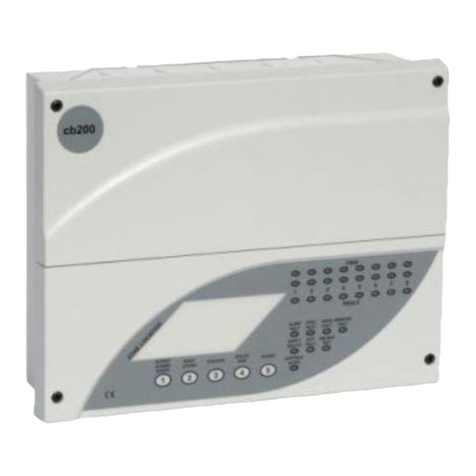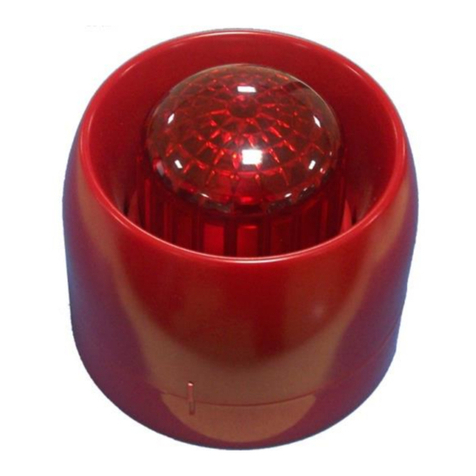Table of Contents Page
1INTRODUCTION.............................................................................................................................................5
1.1 STANDARDS.............................................................................................................................................5
1.2 CAUTIONS AND WARNINGS .......................................................................................................................6
1.3 DESCRIPTION ...........................................................................................................................................6
1.3.1 5000 Series........................................................................................................................................6
1.3.2 5000V Series......................................................................................................................................6
1.3.3 5000N Series .....................................................................................................................................6
2CONTROLS AND INDICATIONS...................................................................................................................7
2.1 GRAPHICAL DISPLAY................................................................................................................................7
2.2 LED STATUS INDICATORS ........................................................................................................................8
2.3 ZONE LED STATUS INDICATORS ...............................................................................................................8
2.4 CONTROL BUTTONS .................................................................................................................................9
2.5 NAVIGATION BUTTONS..............................................................................................................................9
2.6 NUMBER AND LETTER BUTTONS .............................................................................................................10
2.7 BUZZER .................................................................................................................................................10
3OPERATION.................................................................................................................................................10
3.1 ACCESS LEVELS ....................................................................................................................................10
3.1.1 Changing from Access Level 1 to Level 2 .......................................................................................11
3.1.1.1 Menu Access .........................................................................................................................................11
3.1.1.2 Control Buttons at Level 1......................................................................................................................11
3.1.2 Changing from Access Level 2 to 1.................................................................................................11
3.2 FIRE ALARM CONDITION .........................................................................................................................12
3.2.1Detailed Fire Alarm Information.......................................................................................................13
3.2.2 Investigation Delays.........................................................................................................................13
3.3 FAULT CONDITION..................................................................................................................................14
3.4 DISABLEMENT CONDITION.......................................................................................................................15
3.4.1 Disabled Inputs ................................................................................................................................15
3.4.2 Disabled Outputs .............................................................................................................................16
3.5 ALARM CONDITION.................................................................................................................................16
3.6 SUPERVISORY CONDITION.......................................................................................................................17
3.7MULTIPLE CONDITIONS...........................................................................................................................17
3.8 MENU FUNCTIONS ..................................................................................................................................17
3.8.1 Using the Buttons to Navigate Menus .............................................................................................19
3.8.1.1 Selecting Menu Options.........................................................................................................................19
3.8.1.2 Selecting Individual Zone Numbers .......................................................................................................19
3.9 VIEWING.................................................................................................................................................20
3.9.1 View - Fires......................................................................................................................................20
3.9.2 View - Faults ....................................................................................................................................20
3.9.3 View - Alarms...................................................................................................................................20
3.9.4 View - Disabled................................................................................................................................20
3.9.5 View - Inputs ....................................................................................................................................21
3.9.6 View - Outputs .................................................................................................................................21
3.9.7 View - Panel.....................................................................................................................................22
3.9.7.1 Software.................................................................................................................................................22
3.9.7.2 Local Hardware......................................................................................................................................23
3.9.7.3 Network Hardware.................................................................................................................................24
3.9.8 View - Log........................................................................................................................................24
3.9.8.1 Event Log...............................................................................................................................................24
3.9.8.2 Alarm Counter........................................................................................................................................25
3.9.9 View - Network.................................................................................................................................25
3.9.10 View - Warnings...........................................................................................................................25
3.9.11 View - Supervisory.......................................................................................................................25
3.10 DISABLING .............................................................................................................................................26
3.10.1 Disable - Zones and Inputs..........................................................................................................26
3.10.2 Disable - Outputs.........................................................................................................................27
3.10.2.1 All Sounder Outputs...............................................................................................................................27
3.10.2.2 All Beacon Outputs................................................................................................................................27
3.10.2.3 Fire Routing Outputs..............................................................................................................................27





























